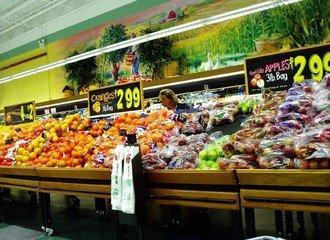Tips on how to achieve a healthy lifestyle without blowing the budget

Many Australian’s complain that adopting a healthy diet is too expensive, however we cannot let financial constraints be a barrier that prevents us from adopting a healthy lifestyle. So that is where I come in. I am here to tell you that it IS possible to meet your health and fitness goals on a budget, you just need to adopt some of the below cost saving strategies:
- Eating Healthy
- Purchase seasonal fruit and vegetables. When fresh produce is in season it is a lot cheaper to buy because it does not need to be imported internationally.
- Buy fresh fruit and vegetables from your local farmer markets rather than supermarkets. Not only are you supporting local businesses, but you can often get fresh produce for much cheaper as the suppliers don't add a huge profit mark-up to their products.
- Plan your meals: Sit down and plan what you will be cooking for each meal. This way you can try to opt for meals that require similar ingredients, therefore shortening your ingredient list and reducing waste. I would also suggest writing a shopping list, as this will prevent you from buying too many ingredients (that may potentially end up wasted). A shopping list will allow you the budget your weeks’ worth of food accordingly.
- Check supermarket catalogues before you shop, so you can see what items are on special and plan your meals accordingly.
- Buy non-perishable foods in bulk. If there is a great special on one of your favourite non-perishable products then buy multiples of them to save you money in the long run, as the special may not last very long.
- Buy canned foods where possible. Canned vegetables, fish and legumes are a great way to bulk up your recipes for a very low cost. They are much cheaper than fresh alternatives, have a longer shelf life and are more convenient for cooking. That being said, when buying canned foods, be sure to opt for ‘no added salt’ varieties to avoid high sodium consumption.
- Use up all the leftover ingredients: If at the end of the week you find yourself with an assortment of fresh/leftover ingredients that are going to go off soon, be creative and think of a meal to use up all the left overs. Good recipes to use up ingredients include frittatas, soups, stir-fries, curries, pastas etc. These meals can also be frozen for consumption in the upcoming few weeks. This will help to reduce food wastage and save you some valuable $$$.
- Pay attention to how much you are paying per kg – It is often more economical to buy a larger version of the product than a smaller one (based on dollar value per kg). If the item is non-perishable, I would recommend you pay more for the larger volume item, rather than buy a smaller one that will need to be replaced more regularly (which costs you more money in the long run).
- Don’t be fooled by ‘health foods’. By all means, if you have a nutritional condition (e.g. Coeliac disease) that requires you to eat specially manufactured foods (e.g. gluten-free products) then go ahead and purchase these products. However, if you have no biological intolerance to certain foods, then just buy the regular alternative, as these ‘health foods’ are much more expensive and have no extra nutritional benefits other than helping those with digestive issues.
- Keeping physically fit
- Engage in outdoor physical activity. Many people complain that they cannot afford a gym membership, however I argue that you don't NEED one to get your daily exercise. Instead partake in free outdoor activities (e.g. running, walking, hiking etc.) or conduct your own workouts in the park (e.g. jumping jacks, tricep dips, push ups, skipping, lunges, squats etc.).
- Look out for free activities in your area. Often your local government will organise and coordinate free activities that promote physical activity and optimal health. For example: local governments often provide free or low cost classes such as yoga, Pilates, aqua aerobics, boxing and Zumba. So checkout your local city council to see what recreational activities they have available for you.
- Utilise public facilities. Get some friends together and go down to public basketball /netball/tennis courts etc. and play a game or two each week. Or head down to your local park with a rugby ball or Frisbee and have a throw around. There are so many options, you just need to be creative and think outside the box.
Why are Corn Thins™ great for a tight budget?
- Corn Thins™ products have a long shelf life, meaning that you can enjoy Corn Thins™ slices over a longer period of time which helps to decrease food wastage. I would recommend swapping bread (which has a shorter shelf life) for Corn Thins™ products.
- Each bag of Corn Thins™ products contains on average 25 slices. That means that if you stick to the recommended serving size of 3 slices, each bag of Corn Thins™ slices can last you 8 meals. With each bag only costing around $2, that is great value for money.
- Corn Thins™ slices are so versatile, and therefore can easily be paired with other low cost toppings (both sweet and savoury).
So really when it comes down to it, I don’t think financial constraints should prevent you from achieving your health goals. Having a budgetary constraint might mean that you have to work a little harder to find cheaper alternatives, but it is 100% possible. Never give up or let anything prevent you from achieving your goals. There is always a solution, you may have just not found it yet … but you will.
Written by Rachel Parfitt
@Thenutritionplayground